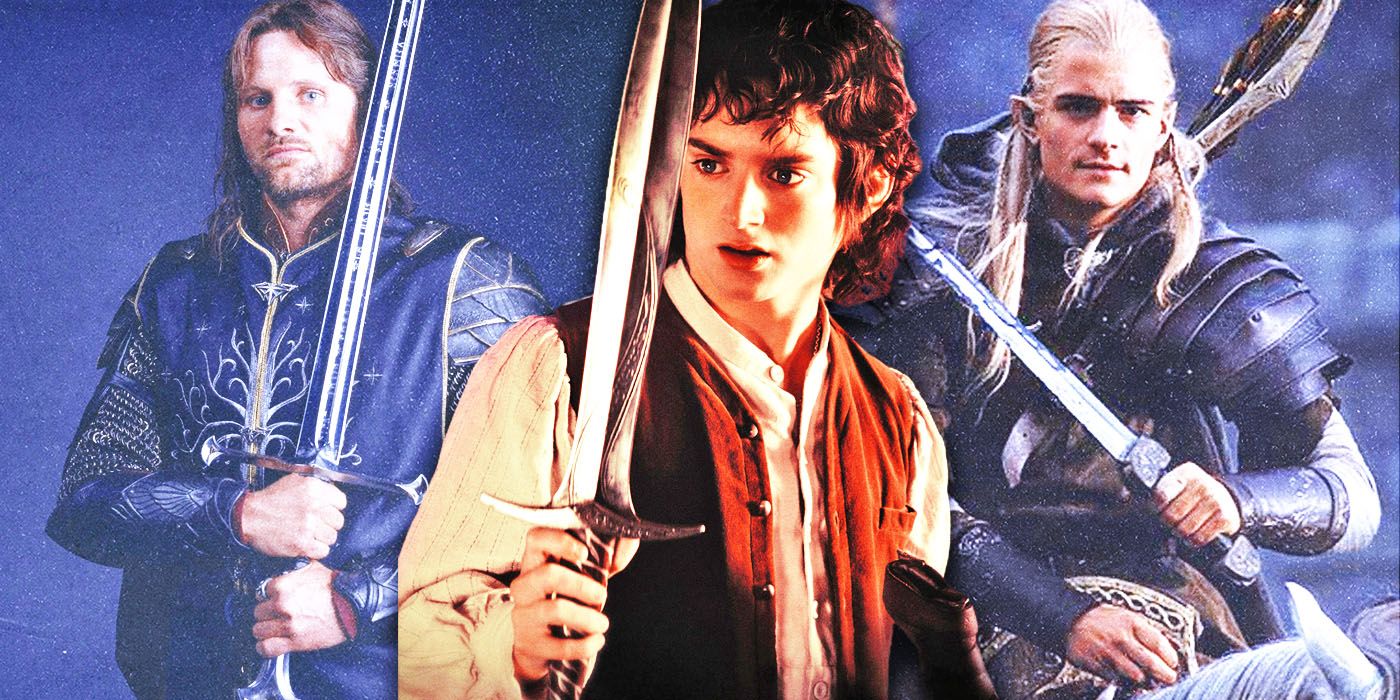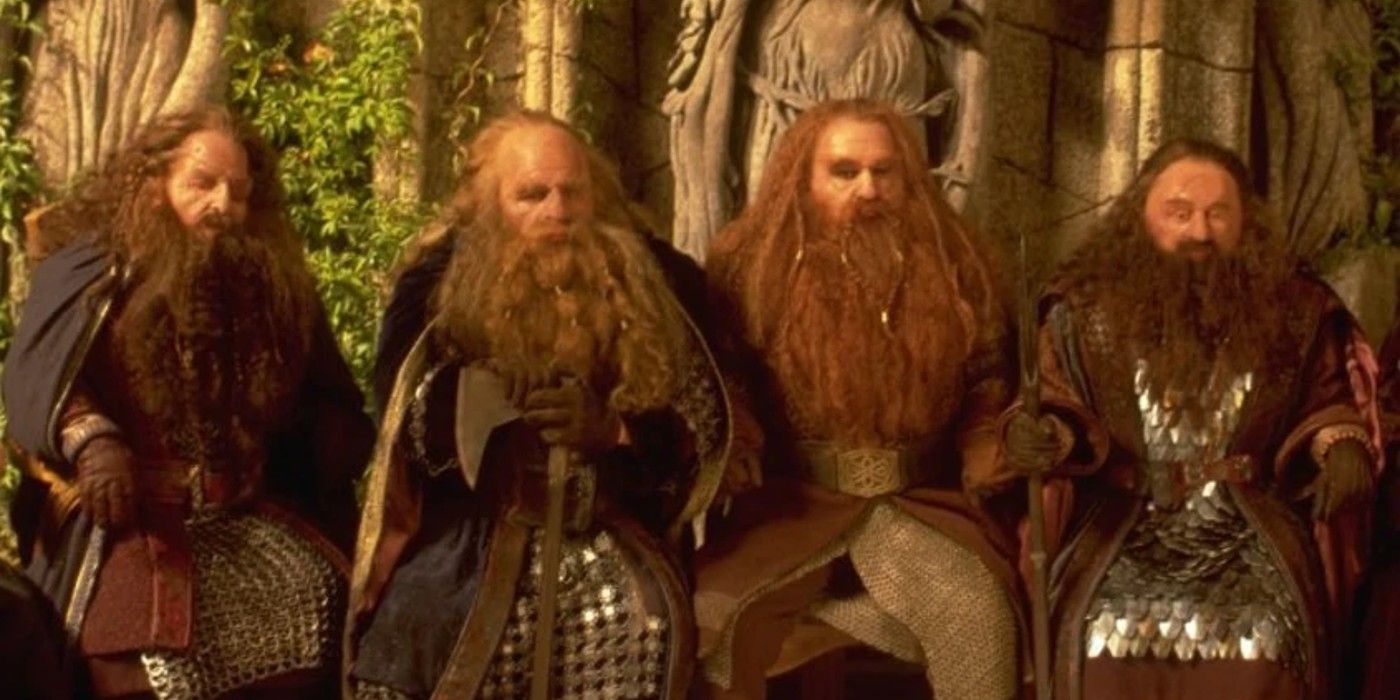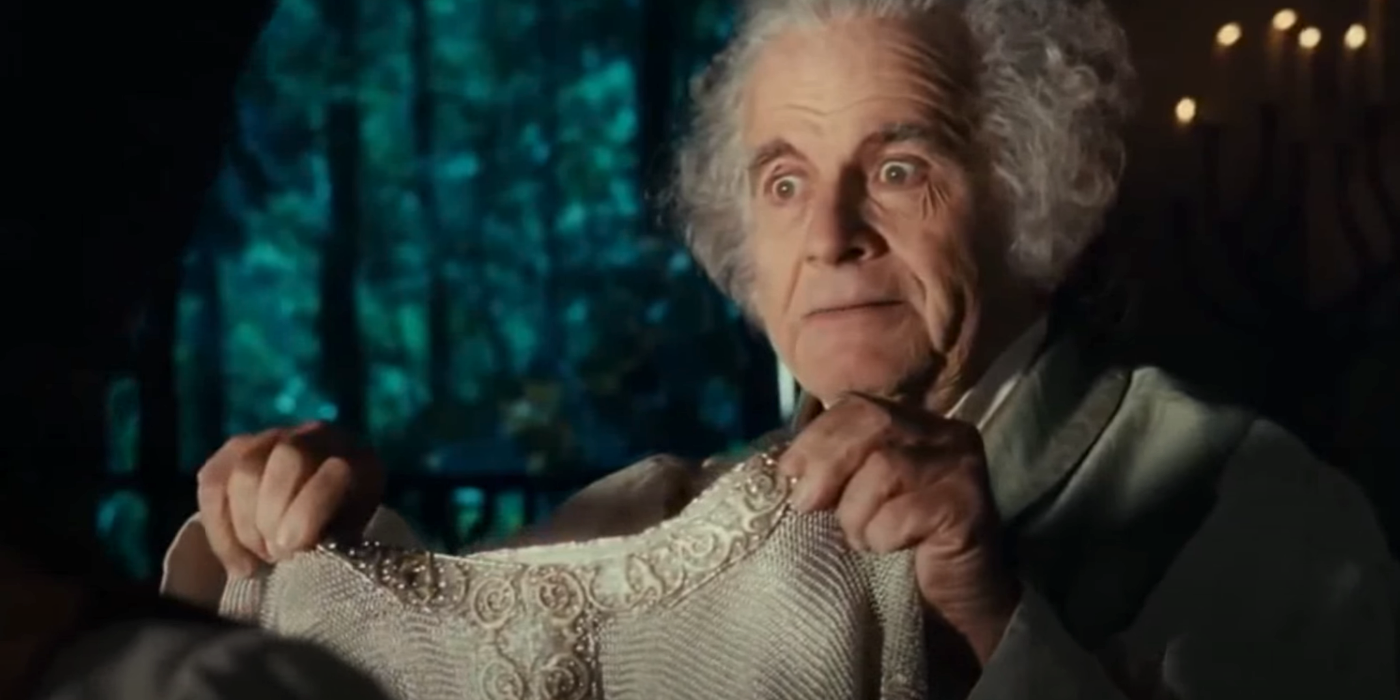
The crafting of armor and weapons in Middle-earth dates back to ancient times, with the earliest known examples created by the Elves and Dwarves during the First Age. These early works were often imbued with magical properties and crafted using rare and precious materials. Besides these two races, humans have also played a significant role in crafting armor and weapons throughout Middle-earth’s history. The Men of Númenor were skilled smiths, and their descendants in Gondor and Arnor continued their tradition of craftsmanship. Human armor and weapons are often practical and functional, designed for use in battle. This design choice contrasts with the elegance and beauty of the Elven smiths and the renowned durability and strength of the Dwarven smiths. The Elves are celebrated for crafting some of the most powerful armor and weapons in Middle-earth, as their weapons are often imbued with magical properties. However, it is ultimately the Dwarves’ expertise at working with metals and minerals, and cultural history tied to their metal-work, that positions them as some of the, if not the best, craftspeople in Middle-earth when it comes to weapons and armor.
Why the Dwarves are the Best Craftspeople of Middle-earth



Narsil/Andúril History
Significant Events
Creation of Narsil
– Narsil was forged by the Dwarf-smith Telchar in the First Age. – It became the sword of Elendil, the High King of Gondor and Arnor.
Battle of the Last Alliance
– Elendil wielded Narsil during the Battle of the Last Alliance against Sauron. – Elendil fell, and the sword shattered beneath him.
Reforging of Narsil
– After the defeat of Sauron, Narsil’s shards were preserved by Elendil’s heirs. – In the Third Age, Elrond of Rivendell reforged Narsil into a new sword named Andúril.
Wielded by Aragorn
– Andúril, became the weapon of Aragorn, the heir of Isildur and rightful King of Gondor and Arnor.
Symbol of Aragorn’s Kingship
– Andúril served as a symbol of Aragorn’s rightful claim to the thrones of Gondor and Arnor. – It became a beacon of hope for the Free Peoples of Middle-earth during the War of the Ring.
Dwarves possess a natural aptitude for working with metal, and their skills in blacksmithing, crafting, masonry, and metallurgy are unmatched by any other race in Middle-earth. Among all these crafts, they were particularly unmatched when it came to the tempering of steel, even by the Noldor, a group of Elves highly skilled in crafts, as well as in the making of mail of linked rings, which the Dwarves of Belegost first created. This proficiency in metals is deeply ingrained in Dwarven culture and passed down through generations, resulting in a long tradition of exceptional craftsmanship. Dwarves deeply understand materials, tools, and techniques related to their craft. They have amassed extensive knowledge and experience over the centuries, allowing them to produce high-quality goods with remarkable precision and durability. This innate ability and talent are even tied to their origins. Unlike Elves and Men, the Dwarves are not counted among the Children of Ilúvatar. Their creator was Mahal, known as Aulë the Smith, who was concerned with rock, metal, works of crafts, and the nature of substances – having made rocks, gems, and all the minerals.
Consequently, it makes sense that the Dwarves are born with these skills and an innate talent for working with metals, as they were made by a Vala who possessed the qualities of working with such materials, placing their craftsmanship into perspective within the larger universe. Dwarven weapons and armor are especially known for their exceptional durability and quality. Dwarves meticulously forge their creations with the highest standards of craftsmanship, ensuring that their products are not only formidable in battle but also long-lasting. Moreover, Dwarves have access to some of the finest materials for crafting weapons and armor, such as Mithril, a precious metal known for its strength and lightness. They also have expertise in mining and extracting these materials from the earth, giving them an advantage in crafting superior weaponry and armor. While Dwarven craftsmanship is steeped in tradition, Dwarves are also capable of innovation and adaptation. They are skilled at incorporating new techniques and designs into their work, continually refining their craft to produce even more effective weapons and armor.
The Dwarves have crafted some legendary and iconic items over the centuries. Among them is Narsil, the sword of King Elendil of the Dúnedain, which later became known as Andúril, Flame of the West, when it was reforged by the Elves. The sword was passed down through generations of the Kings of Arnor and later the Rangers of the North until it reached Aragorn, who carried it throughout the Fellowship and War of the Ring. Additionally, the Dwarves crafted other famous items, such as the sword of Elendil, the father of Isildur and Anárion, a survivor of the Downfall of Númenor, and the Dragon-helm of Dor-lómin, the heirloom of the House of Hador that was worn by Túrin, a tragic hero of the First Age. Another notable item crafted by the Dwarves, remembered from The Lord of the Rings Trilogy, is Frodo’s mithril shirt, which he receives from Bilbo, who received it as a gift from Thorin Oakenshield in The Hobbit. Mithril, a rare and precious metal known for its incredible strength and lightness, is among the few materials the Dwarves excel at working with, allowing them to create some of the most exquisite armor and garments. It is a combination of their skills, along with the weaponry and armor they have made over the generations, that distinguishes them as the finest craftsmen in this fantasy world.
Why the Elves Come After the Dwarves in Crafting Weapons and Armor
Elven Swords
Creator
Year of Creation
Description
Orcrist
Elves of Gondolin
First Age
Known as “Goblin-cleaver” or “Biter”
Glamdring
Elves of Gondolin
First Age
Known as “Foe-hammer” or “Beater”
Sting
Elves of Gondolin
Unknown
Known for glowing in the presence of Orcs.
The Elves have a different history to the Dwarves in Middle-earth, as they were the first of the races of the Children of Ilúvatar. They are distinguished from the other two races, Men and Dwarves, particularly because of their near immortality. This longevity allows them centuries, if not millennia, to perfect their skills. It is due to this immortality that they have the opportunity to accumulate vast amounts of knowledge and experience in various crafts, including smithing, jewelry making, and woodworking. Elves possess a natural talent for craftsmanship, often described as being imbued with a sense of grace and elegance. Their works reflect not only technical mastery but also an innate aesthetic sensibility that sets them apart from other artisans. Elves have a deep connection to the natural world, which influences their craftsmanship. They often incorporate organic forms and motifs inspired by the beauty of nature into their creations, resulting in pieces that are both exquisite and harmonious with their surroundings. Moreover, Elves have access to rare and magical materials, such as Mithril and ithildin, which enhance the quality and properties of their creations. These materials are often imbued with mystical properties that add additional strength, beauty, or enchantment to Elven-made items.
Throughout their history, the Elves boasted many notable smiths and craftspeople, among them Fëanor, renowned for crafting the famous Silmarils. These were a set of three gems created from the essence of the Two Trees of Valinor. These were among the most prized of all the wonders crafted by the Elves and were coveted by many, including Morgoth. Another notable figure was Celebrimbor, an Elven smith manipulated into forging the Rings of Power by the Dark Lord Sauron, an event featured in the television show The Lord of the Rings: The Rings of Power (2022). However, when it comes to armor, swords, and daggers, the Elves distinguish themselves through the incorporation of Elven steel into these crafts, making these pieces incredibly rare and powerful in Middle-earth. The magic and techniques used in the forging process of regular iron ore are what make Elven steel items so special. However, it should not be mistaken for Mithril, an even rarer and coveted substance. Each Elven sword made with this steel has unique properties that correspond with its maker and wielder. A prime example is Gandalf’s famous sword, Glamdring, originally forged for the Elven King of Gondolin in the First Age and was later acquired by Gandalf during the events of The Hobbit.
The sword was made with meticulous detailing and expertise and was even inscribed with Elven runes to allow its wielder to channel its true powers, such as Gandalf did. Bilbo’s sword, Sting, also shares similar unique qualities to Glamdring. It distinguishes itself by magically turning blue when orcs are nearby, indicating that each of these swords has different kinds of abilities. Orcrist, an Elven sword and the mate of Glamdring, can detect the presence of Orcs and warn its bearer by glowing blue, similar to Sting. Orcs dubbed the Blade Biter, making it not only a valuable weapon but also one that was feared among their enemies, particularly among Orcs. It was through the events of The Hobbit that Sting, Glamdring, and Orcrist are discovered in a Trolls’ cave in Eriador by Thorin and his company. These blades were then used to fell some of the mightiest of foes; for instance, Gandalf used Glamdring to vanquish the Balrog, Legolas later used Orcrist to defeat the powerful oOrc Bolg, and Sting was used it to stab the formidable creature of the dark, Shelob. Consequently, each of these swords is intricately connected to the long history of the Elves and reflects the wisdom and magic of this race. While the Elves have crafted some formidable and iconic weapons and armor over the centuries, they fall just short of the Dwarves, whose inherent talent at metal crafting and history makes them among the best craftspeople in Middle-earth.





